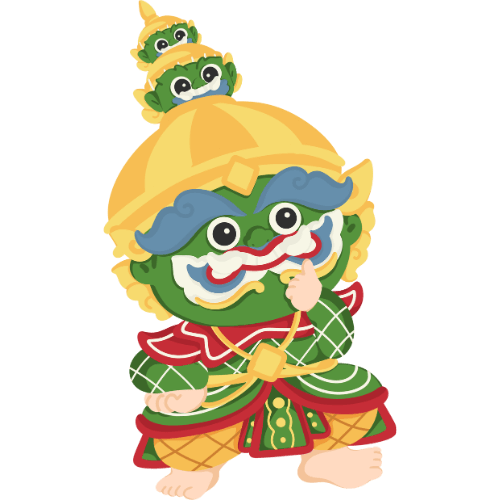Learning Guide
Thai Alphabet

The Thai alphabet, known as Akson Thai, is an abugida writing system derived from the ancient Khmer script, which in turn derived from the Brahmi script of India. It consists of 44 consonants and 15 vowel symbols that combine to form numerous complex vowels. The alphabet also includes four tone markers and various other diacritical marks. Consonants are classified into three categories (high, mid, and low), which, in combination with the tone markers, determine the pronunciation of the five tones of Thai: mid, low, falling, high, and rising. The Thai script is read from left to right and does not use spaces between words, although spaces are used to separate phrases and clauses. The Thai writing system is unique in that it allows for the accurate representation of tones, a crucial aspect of the language.
อักษรไทย
Contents
- Introduction
- How does it work?
- Form a syllable
- Thai Alphabet
- - The Consonants
- - The Vowels
- - The Compound Vowels
- - The Special Vowels
- Learn with a course
Introduction

The Thai script, known as akson thai (อักษรไทย), is a fascinating alphasyllabic system whose history dates back to the 13th century, during the reign of King Ramkhamhaeng the Great. This script has its origins in the Khmer alphabet, itself derived from ancient Indian scripts such as Pallava and Brahmi. The Ramkhamhaeng Stele, dating from 1292, is often cited as one of the earliest uses of the Thai script, although its authenticity has been debated. The Thai alphabet consists of 44 consonants, each with a specific name that combines the consonant sound with a word that contains it. These consonants are divided into three distinct classes: high, mid, and low—a classification crucial for determining the tonal pronunciation of syllables. This unique structure allows for the representation of the five tones of the Thai language: mid, low, falling, high, and rising, which is essential for the correct understanding of words. In addition to consonants, the Thai alphabet includes 32 vowels (or 28 according to some sources, including diphthongs and triphthongs), which provides a great phonetic richness.
The formation of syllables in Thai is complex and distinctive. Each syllable is generally composed of an initial consonant, a vowel, and possibly a final consonant. The vowels can be placed in different places relative to the initial consonant: left, right, above, below, or even surrounding the initial consonant. For example, the vowel 'โ' (o) is placed before the consonant, while 'ะ' (a) is placed after. Some vowels are not written but are implicit, such as the 'a' in some polysyllabic syllables. The final consonants are limited to eight distinct sonorities, meaning that some consonants change their sonority in the final position. A unique feature of the Thai script is the absence of uppercase letters, punctuation, and spaces between words, which can make the reading continuous and without apparent pauses. This complex structure, combined with the importance of tones and the flexibility in the position of vowels, makes the Thai script a unique and fascinating system, reflecting the richness of the language and the Thai culture.
